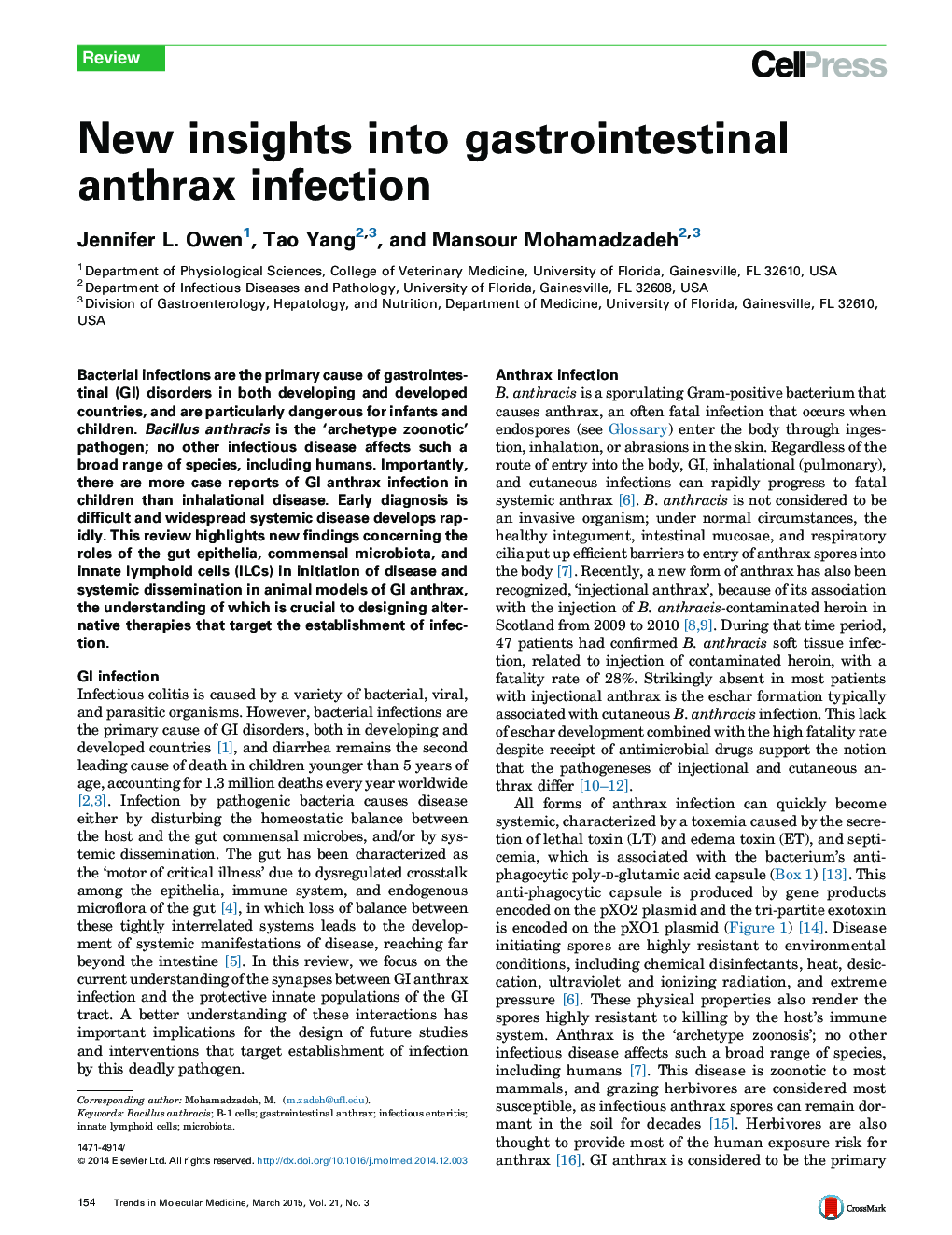| Article ID | Journal | Published Year | Pages | File Type |
|---|---|---|---|---|
| 2838334 | Trends in Molecular Medicine | 2015 | 10 Pages |
•We briefly review all forms of anthrax infection.•We discuss molecular strategies of Bacillus anthracis to initiate and sustain infection.•We focus on the current understanding of gastrointestinal (GI) anthrax infection.•We examine innate lymphocytes, the epithelia, and the microbiota with GI anthrax.
Bacterial infections are the primary cause of gastrointestinal (GI) disorders in both developing and developed countries, and are particularly dangerous for infants and children. Bacillus anthracis is the ‘archetype zoonotic’ pathogen; no other infectious disease affects such a broad range of species, including humans. Importantly, there are more case reports of GI anthrax infection in children than inhalational disease. Early diagnosis is difficult and widespread systemic disease develops rapidly. This review highlights new findings concerning the roles of the gut epithelia, commensal microbiota, and innate lymphoid cells (ILCs) in initiation of disease and systemic dissemination in animal models of GI anthrax, the understanding of which is crucial to designing alternative therapies that target the establishment of infection.
